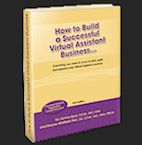One of the most daunting and stressful tasks professionals in the service industry face is how to correctly respond to Requests for Proposals (RFP) or Requests for Quotations (RFQ) in such a way that there will be a chance that you will actually get the contract.
Compiling a response to an RFP is more than just including your name and “I can help you…” that just won’t cut it. With a little effort and common sense, you can develop your own professional proposal in your own style.
Before you even begin typing your proposal, there are a number of things to do first and things that you need to consider to create a winning proposal.
- First and foremost, be sure to read the RFP carefully. Prospective clients will quickly put your proposal aside or delete it if you can’t even follow the instructions that they have specified or offer responses to their specific inquiries.
- If possible, do a little research on the person who submitted the RFP. Most online RFP forms allow the person to include their website address. Visit their site and see what you can find out.
- Jot down any notes as you go along. If they have requested that bidders evaluate a website or a file, be sure you do that thoroughly making notes as you go.
- Determine if you can take care of all of the aspects of the quotation request. If you feel that you may need to sub-contract some of the work, be sure to check with your network of associates to determine first if they have the skills and second, if they have the time.
- Set aside enough time to fully prepare your proposal and in a timely fashion. Responding within 24 hours is recommended unless there needs to be extensive research that the potential client is aware will take time to compile.
With the information you gathered doing the above steps, it is now time to compile and enhance it all into a draft copy and then into a winning proposal. We will get into how to finalize the draft later.
Your proposal needs to be formatted in a professional and organized manner. The first thing to include is the date of your proposal and the contact information of the recipient. Format it similar to writing a formal letter to someone.
- Introduce yourself and include why you are contacting them. The reason for the email should also be in the subject line if you are sending the proposal by email.
- Refer to the RFP now and mention what they requested. Include a copy of the original RFP at the very end of your proposal if possible and then you can refer to it in your response and your recipient can be reminded of what they originally requested.
- Outline your experience in relation to the task(s) or project(s) that the client needs help with. Provide a brief outline of your work and educational experience, including the number of years you have been doing similar assignments.
- Explain how you can help them. Outline the tasks and procedures you will follow. However, don’t overdo the explanation. If you ramble, they may grow bored of your response. Not to mention, they want your help with the project and if you provide too much detail, they may decide they can do the work themselves following your instructions.
- Add in any extra information to enhance the proposal and show the client that you are willing to go beyond the call of duty.
- Properly estimate how long the project will take to complete and what the cost will be to the client. If the project is best quoted at a bulk rate, provide this type of format.
- Be sure to include any additional charges that may incur so the client is not surprised when the final bill comes.
Once you have compiled your first draft, it is now time to refine your information and ensure you have included all the requested and required data and that it is formatted in an organized and easy to follow and read document.
- Read over your entire proposal making any necessary changes and add in any missing information or enhancing it.
There is so much more involved in putting together a response to a Request For Proposal that it will not all fit in one article. We invite you to visit our website and pick up a full copy of these tips in our new eBook, Tips for Responding to RFPs at http://www.docutype.net/business_ebooks.htm where we have gone into greater detail for the above steps, additional steps to enhance your proposal plus where to go from here.
Good luck!
About the author
Janice Byer, owner of Docu-Type Administrative & Web Design Services (http://www.docutype.net) provides professional, creative and affordable virtual office assistance and small business website design. She is a Certified Canadian Virtual Assistant (CCVA) and Master Virtual Assistant (MVA). She is also a co-author of How to Build a Successful Virtual Assistant Business and author of a library of Business Building Ebooks. Visit her website for more information.
© Docu-Type – You may reprint this article online and in print provided the links remain live and the content remains unaltered (including the “About the author” message).







Leave a Reply